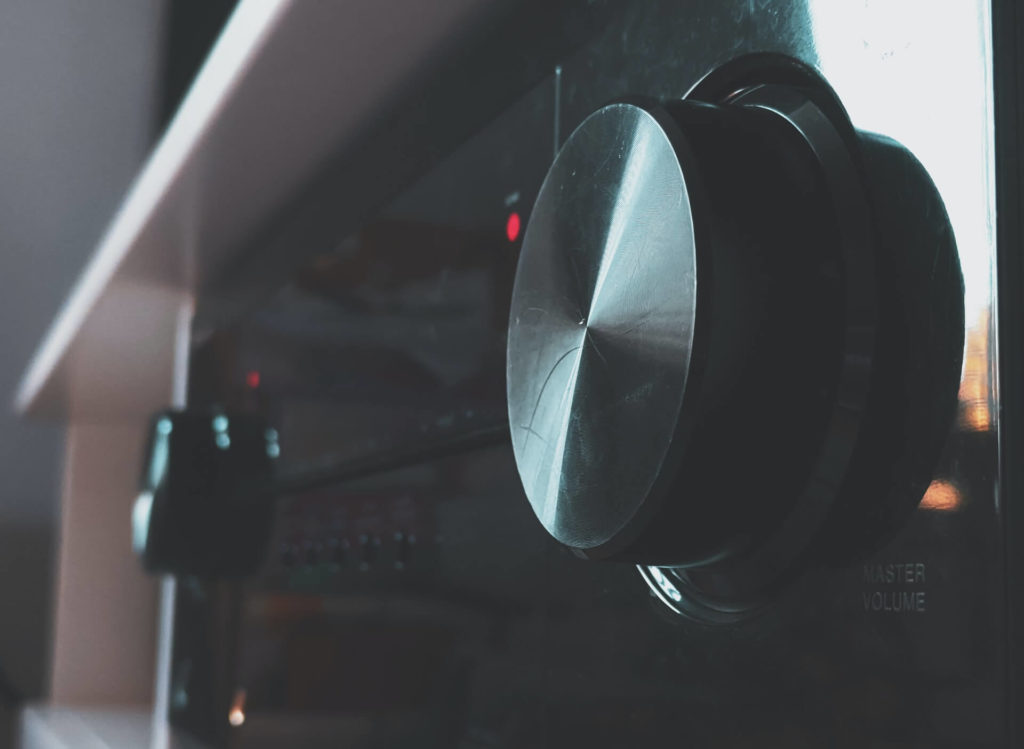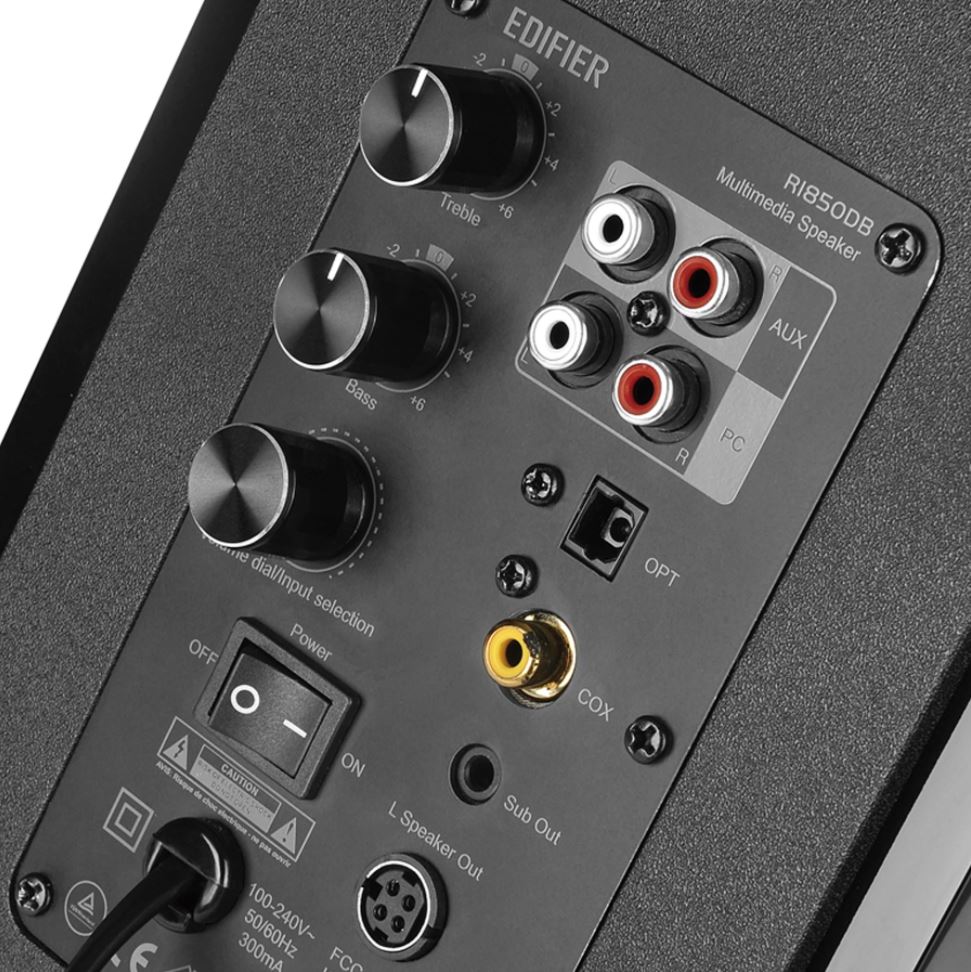In the world of home theater, you’ll hear the term “pre-outs” getting thrown around. If you’re not sure what this means or how it applies to your AV receiver, then you’ve come to the right place. Hooking a powered subwoofer or other speakers to an AV receiver is a must for a dedicated home theater. But what if you don’t have more speakers than your receiver can power? However, most people know little about the importance of pre-outs, and how they can benefit from overall system performance. Here is everything you need to know about AV receiver pre-outs!
Table of Contents
What Is a Pre-Out On An AV Receiver?

A pre-out is output on your AV receiver that lets you utilize power from an external power amplifier. That’s in contrast to using the AV receiver’s internal amp. This is useful for those who want to create a multi-room audio system and are looking to add more speakers without adding more AV receivers.
AV Receivers: Sub Pre-Out vs. Pre-Out
Pre-outs and Subwoofer Pre-outs are popular features in AV receivers. They allow the user to send audio signals to other external speakers. You can use these for more than just multi-room audio as you can also use them with an amplifier to create surround sound systems.
A Sub Pre-Out is a Dedicated Pre-Out for Subwoofers
Sub Pre-Outs really function very much as regular pre-outs do. Subwoofer pre-outs just might be many people’s introduction for a few reasons. The first is that powered subwoofers are more prevalent than other types of speakers that are typically passive. Powered subwoofers have amplifiers, which means they combine a loudspeaker and an amplifier in a unit. The fact that they typically have their own power supply makes them an obvious choice for a pre-out. There is also no distinction of left or right necessary with a low-frequency driver. This makes it easier for AV receivers to incorporate a pre-out for subwoofers. That leads me to the other reason why subwoofer pre-outs might be your introduction to pre-outs.
AV Receivers with subwoofer pre-outs are a little easier to find. If you are shopping for AV receivers, you may have noticed the more expensive options have many more pre-outs provided. More entry-level or affordable AV receivers will at least provide 1 or 2 sub pre-outs. This is very convenient if you want dual subwoofers. Another benefit of a powered subwoofer is that you can more easily adjust the amount of bass you want in your home theater system. AV receivers do have bass management features. On-board volume and crossover capabilities of powered subwoofers still add flexibility.
How Important Is A Subwoofer For Home Theater?
People spend thousands of dollars on high-definition televisions, smart home theater systems, and surround speakers. But subwoofers? Subwoofers are often an afterthought. That’s a great mistake one can. Subwoofers are a fundamental part of any home theater system, and choosing one that complements the rest of your setup can potentially make an enormous difference in both the quality of audio and the overall entertainment experience.
You may wonder if a subwoofer is needed for a true home theater system. Here is the biggest reason why they are. Using a subwoofer will improve the overall sound quality of your existing audio system. A dedicated subwoofer can deliver lower frequencies of bass that are more powerful than what regular speakers can offer. For the movie-watching experience, these big, impactful bass notes are essential. The very low sub-bass frequencies can’t be replicated with just a pair of bookshelf speakers. This is also beneficial if you want to enhance the quality of the music played.
Why Would I Use A Pre-out?
AV Receivers with pre-outs can receive an audio signal from speakers with their own internal amplifier. Here are some reasons you would use a pre-out:
- Strain Your AV Receiver Less – Every speaker drawing power from your receiver puts a strain on its resources. An external power amp will allow your receiver to power existing speakers more effectively.
- More Channels In Speaker System – AV Receivers are limited by how many speakers they can power. That doesn’t have to limit how many speakers you incorporate. Additional speakers can add alot to your home theater experience.
- Multi-Room Capability – More speakers means placement flexibility too. Zone functionality on receivers allows you to utilize only certain groups of speakers. Your receiver has more value driving your home theater and your power speakers in the kitchen.
Pros and Cons of Pre-Out Receivers

Pros of Using Pre-out Receivers
If you’re looking to use pre-outs, there are some benefits you can enjoy:
Improve Your Home Theater
Many people who use their home theater systems simply connect their available passive speakers or what their receiver can power. Having pre-outs and an external amplifier really opens things up. Additional active or wireless speakers can also be effectively utilized. More speakers, especially subwoofers, can add key value to the home cinema experience.
Better Sound Quality
Underpowered speakers don’t perform as well. Sound quality will suffer when they do not have sufficient power. Lessening the strain on your receiver will result in better sound quality. Using a pre-out to incorporate a subwoofer can also allow you to use crossover settings on other speakers. Allowing your subwoofer to solely handle those deep, low frequencies will direct more power to the rest of the frequency range in your other speakers.
Cons of Using Pre-Outs Receivers
There are some disadvantages to using pre-outs, including:
Pre-Out Receivers Can be Expensive
Receivers with pre-outs are usually more expensive. You can pay a hefty price for a receiver that has extensive pre-out options. Cheaper models may none or only a subwoofer pre-out. Just don’t be surprised if pre-outs aren’t available on more entry-level model.
Potential Sound Issues and Additional Cables
A common downside of using pre-out receivers can be incorporating them into your system. Additional cable and set-up can be a hassle. Even subwoofers can be difficult at first when incorporating them with room correction software like Dirac or Audyssey MultiEQ.
Using A Subwoofer Pre-Out: FAQs
What Is The Difference Between A Sub-Out and Sub Pre-Out?
These terms are often used interchangeably and mean the same thing. Both allow devices to relay an audio signal to a subwoofer that is using a separate power source. Sub-outs can be found on receivers and active speakers, while a bu
What Is A Sub-Out Speaker?
A speaker with a subwoofer out feature will allow a connection to a subwoofer for added low-frequency response. This is a popular feature in active speakers that don’t usually have the ability to hit frequencies below 40Hz.
Do I Need A Subwoofer Pre-Out?
While not required, a subwoofer pre-out will typically be needed on an AV receiver to add a low-frequency response in a seamless manner. Other options are more complicated including using speaker wire, which isn’t supported on all subwoofers.

Keith Collins has been writing for over 15 years for various publications. He’s a lover of music, home theater, and excellent sound quality. His fondness for technology in addition to his non-stop curiosity fuels his writing ventures.